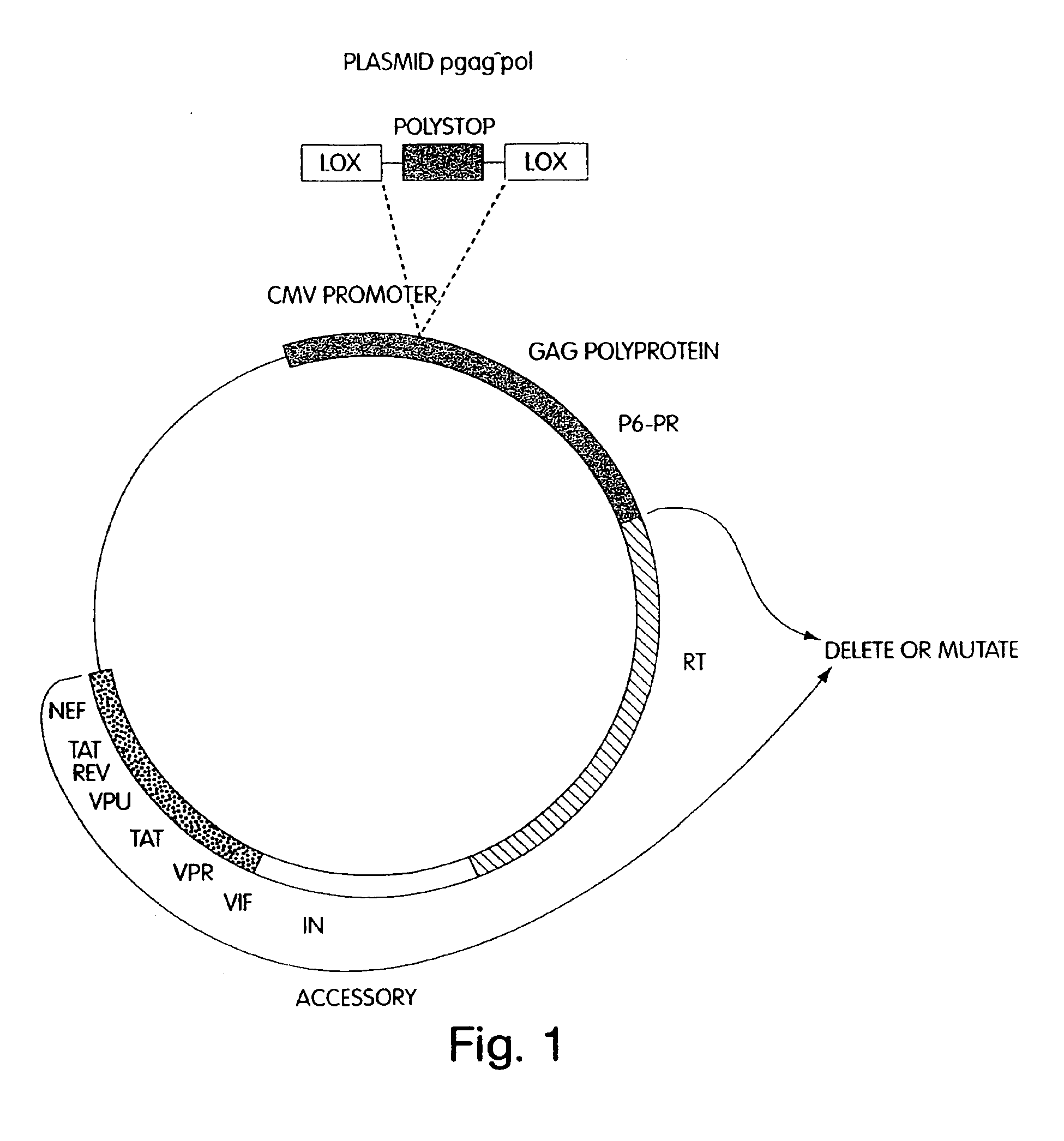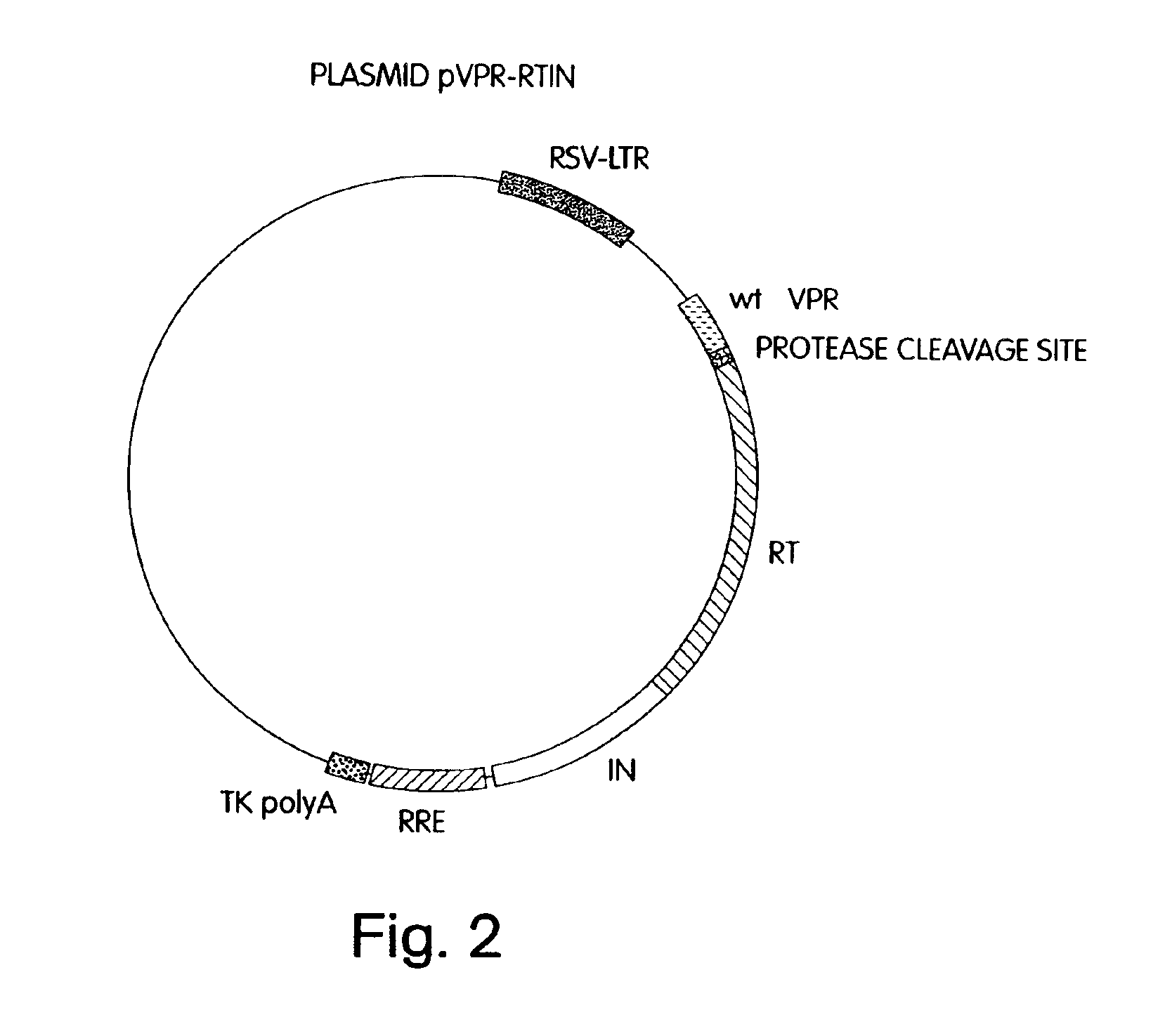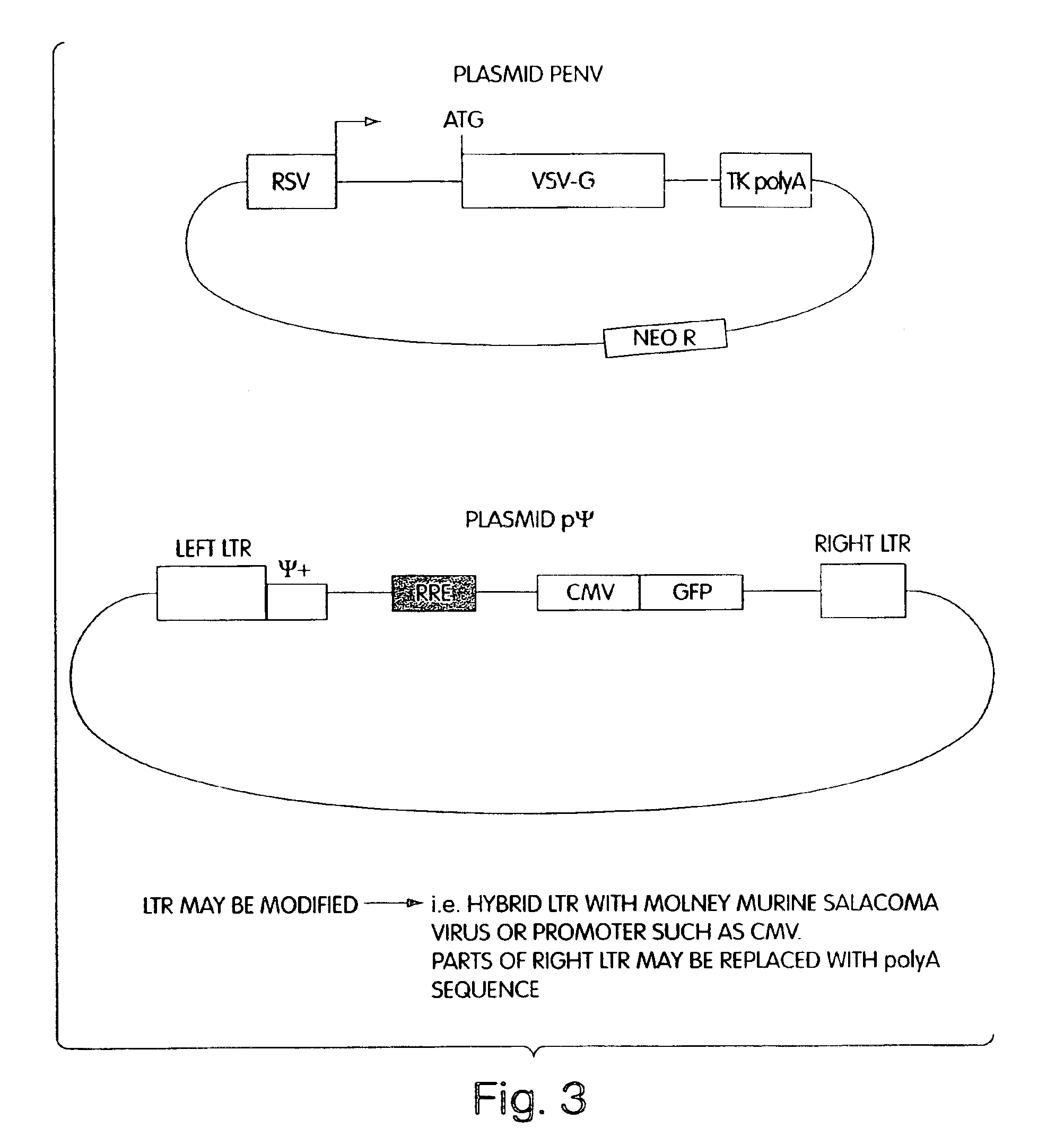Lentiviral packaging cells and uses therefor
a technology of lentiviral packaging and lentiviral cells, which is applied in the direction of animal repellants, biocide, genetic material ingredients, etc., can solve the problems of limited use of in vivo gene transfer to nonproliferating cells, hematopoietic stem cells, neurons, etc., and achieves safe and efficient effects
- Summary
- Abstract
- Description
- Claims
- Application Information
AI Technical Summary
Benefits of technology
Problems solved by technology
Method used
Image
Examples
examples
Preparation of Helper Free Lentiviral Packaging Cell Line
[0058]Stable packaging cell lines which produce recombinant HIV, free of detectable helper-virus, were prepared as described below. The packaging cell lines virtually eliminate the possibility of recombinational events that can result in intact, replication-competent helper-virus, by separating the necessary coding sequences to produce and assemble virions, and package RNA, onto four separate plasmids, referred to herein as plasmids pgag^pol, pVpr-RTIN, pENV and pΨ. These plasmids contain minimal common HIV sequences, and minimal HIV non-coding sequences. They also contain inducible promoters to prevent toxicity to packaging cells caused by expression of cytotoxic proteins, such as Vpr. When transiently co-transfected into suitable mammalian packaging cells, the cells produce HIV-derived retroviral vector particles without recombination to produce helper-virus.
Plasmid Preparation
[0059]Each expression plasmid was constructed us...
PUM
| Property | Measurement | Unit |
|---|---|---|
| structure | aaaaa | aaaaa |
| molecular structure | aaaaa | aaaaa |
| stability | aaaaa | aaaaa |
Abstract
Description
Claims
Application Information
 Login to View More
Login to View More - R&D
- Intellectual Property
- Life Sciences
- Materials
- Tech Scout
- Unparalleled Data Quality
- Higher Quality Content
- 60% Fewer Hallucinations
Browse by: Latest US Patents, China's latest patents, Technical Efficacy Thesaurus, Application Domain, Technology Topic, Popular Technical Reports.
© 2025 PatSnap. All rights reserved.Legal|Privacy policy|Modern Slavery Act Transparency Statement|Sitemap|About US| Contact US: help@patsnap.com



